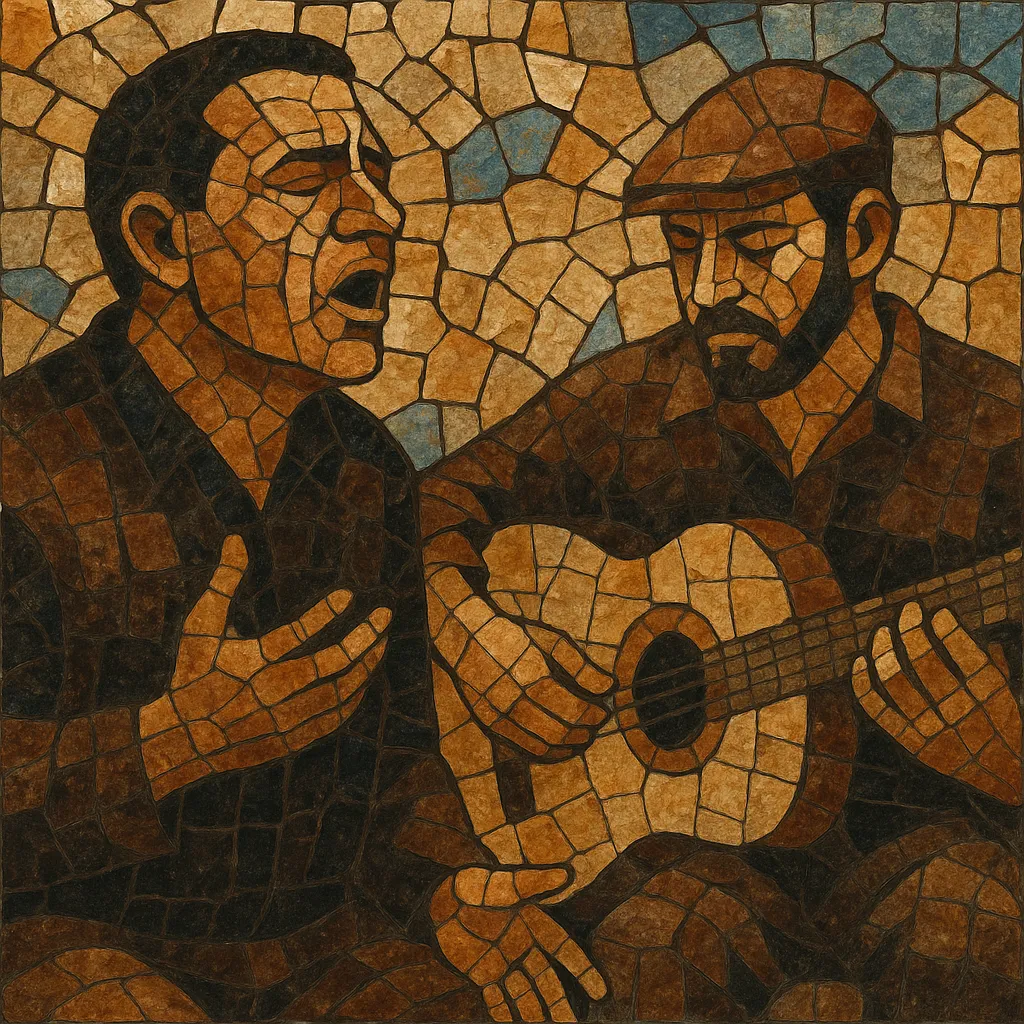Għana is the traditional Maltese folk song tradition, centred on improvised, poetically dense singing in the Maltese language accompanied primarily by guitars. It is a social art practiced in kitchens, village courtyards, bars, and festivals, where singers engage audiences with wit, eloquence, and emotional storytelling.
The practice has several substyles: spirtu pront (quick‑witted improvised debate between singers), għana tal‑fatt (narrative ballads recounting real events), għana fil‑għoli (a highly ornamented, high‑register style historically associated with women), and makjetta (comic songs). Musically it combines melismatic, Semitic‑tinged vocal ornamentation with steady guitar ostinati and harmonies that often circle around tonic–dominant centres. The emphasis is on rhyme, meter, topical dexterity, and the performer’s ability to answer or outmaneuver an opponent in real time.
Għana crystallized in the early 20th century in rural Malta, drawing on older Mediterranean sung‑poetry practices, local balladry, and Arab‑influenced vocal ornamentation embedded in the Maltese language. Informal house gatherings and village festas provided the earliest settings, with small groups of guitarists accompanying one or more singers.
As Malta urbanised and dockyard communities grew, għana moved into bars and social clubs around the Grand Harbour. The spirtu pront duel—where singers exchange improvised stanzas over a fixed guitar pattern—became the most public‑facing form. Radio and later television broadcasts helped standardise format, ensemble (typically multiple guitars with a lead “prim”), and etiquette (turn‑taking, agreed topics, and adjudication by audience reaction).
Parallel strands flourished: għana tal‑fatt (ballads recounting true events), makjetta (humorous character pieces), and għana fil‑għoli (high, melismatic singing, often with freer rhythm). Shared across all forms are strict rhyme schemes, consistent syllable counts within stanzas, and a premium on linguistic precision and metaphor.
From the 1980s onward, cultural organisations and researchers documented veteran singers, while new ensembles fused għana aesthetics with other Mediterranean and global styles. The state‑backed Għanafest (Malta Mediterranean Folk Music Festival) helped renew interest, spotlighting masters and mentoring younger performers. Maltese diaspora communities—especially in Australia and Canada—sustained house‑party sessions, preserving dialectal variants and accompanying guitar idioms.
Today għana remains a living, community‑rooted tradition. Purist sessions coexist with cross‑genre collaborations, while workshops codify etiquette, guitar tunings, and improvisational techniques for new generations.


